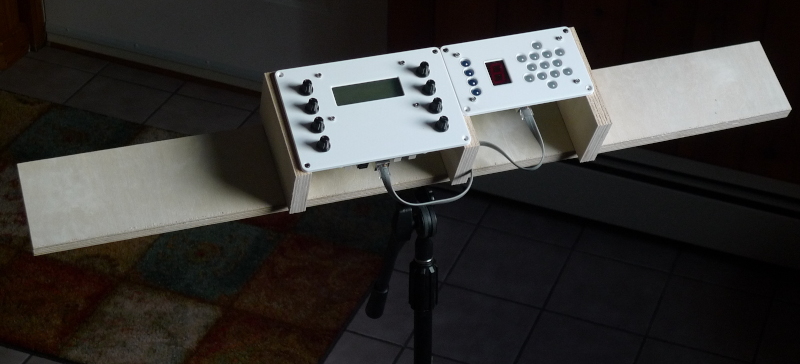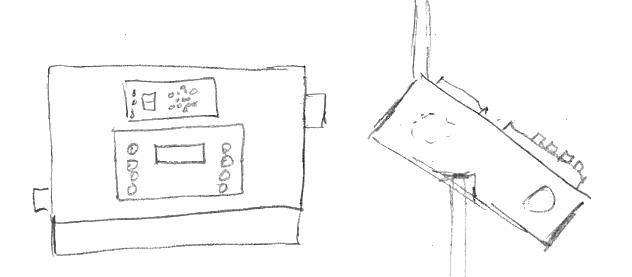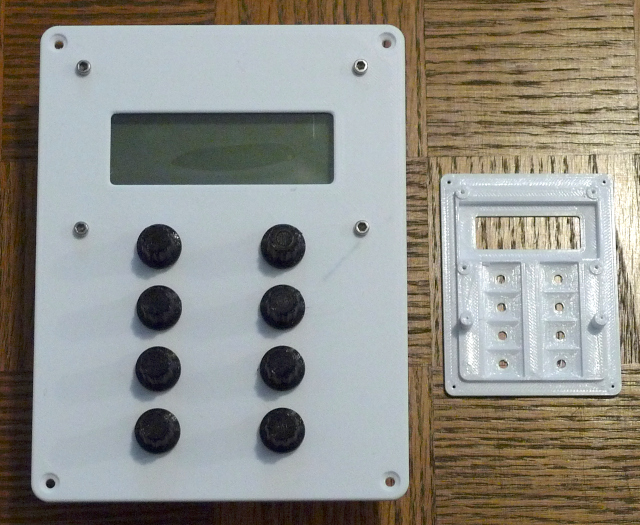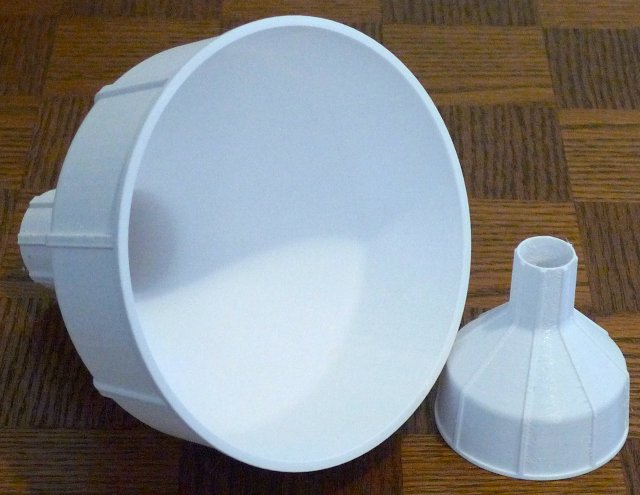P4 (Playing Along With The Home Edition Of Jeopardy)
Inspired by Roger's Etherwave-ish RP3, I whipped up a side-by-side LCD & encoders panel in OpenSCAD. Encoders located below the LCD keeps your hands from obscuring the LCD when twiddling, but makes for an awkward overall layout.
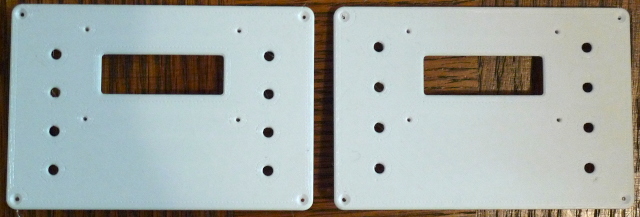
The above were printed 1/2 scale. Started with the one on the right, where the encoder vertical spacing is maximal and centered on the panel. Transitioned to the one on the left where the top two encoders are centered on the LCD, which seems like a slight improvement as it moves the top knobs down a bit, though it cramps the knobs up slightly more. The LCD itself is located by centering the main PWB with the panel both horizontally and vertically. There is a 10mm overhang all around, and this results in panel dimensions of 185mm x 125mm.
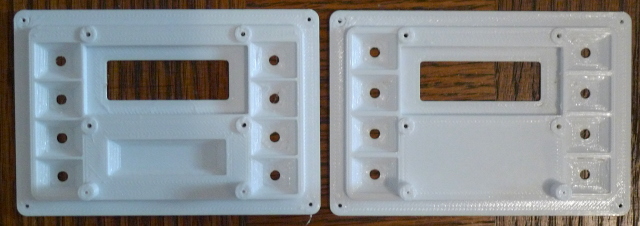
Above is a back view of the half-size panels, showing the mounting PWB posts and encoder cutouts. The front panel is 5mm thick, the back panel area is also 5mm thick, making it 10mm max. I carved out a spot for some optional extra front controls under the LCD and vertically centered it on the lower two encoders.
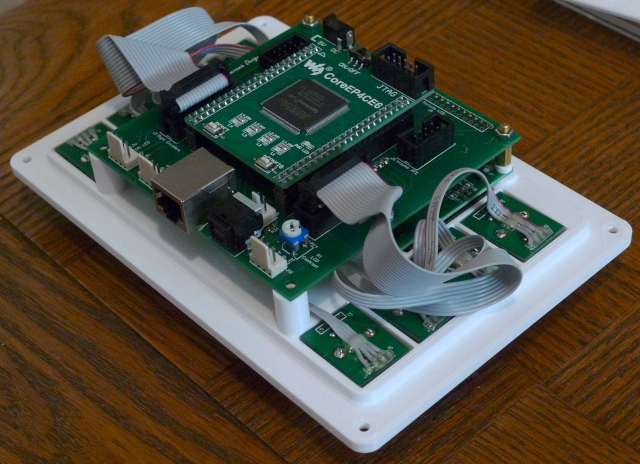
Above the main PWB, LCD, and encoder boards (ripped from P2) have been added. Note that the encoder PWBs actually end up being recessed below the back.
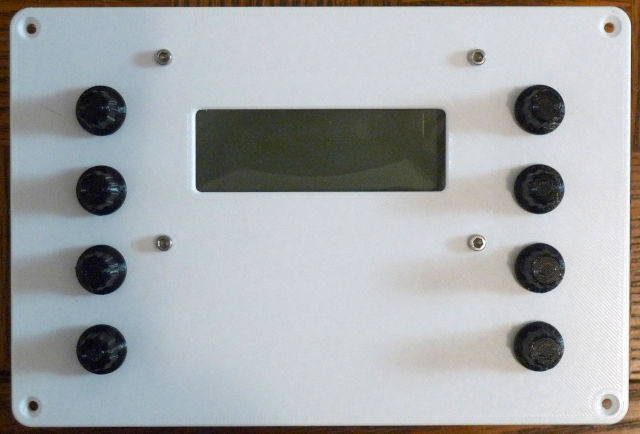
Above is a front view, with new printed black knobs. The LCD weirdness is the clear protective plastic that I haven't bothered to remove yet.
Next up: printing a tuner panel and getting everything on one plank of wood. My aim is to use a boom mic stand to get the angle from a simple square box, rather than from a more complex angled panel box. Thinking of identical left and right printed horizontal antenna mounts, much like Roger is using for his volume antenna.
One could, I suppose, design a tiny LED tuner PWB and stick it below the LCD, making an entirely ambidextrous setup (though beware the enticing side goal).
Panelizing things creates very handy sub-units, and enables one to use an otherwise sealed wooden box for the enclosure, as the panels provide plenty of access. But finishing the panels so they don't look obviously printed is the rub.
If you ever get into the prototyping biz (god help you) make sure you have at least two copies of the guts - one to use full time, the other to play around with.
![]() here's my stab at all of them (with the exception of the Butthole Surfer's tune): [MP3].
here's my stab at all of them (with the exception of the Butthole Surfer's tune): [MP3]. 





